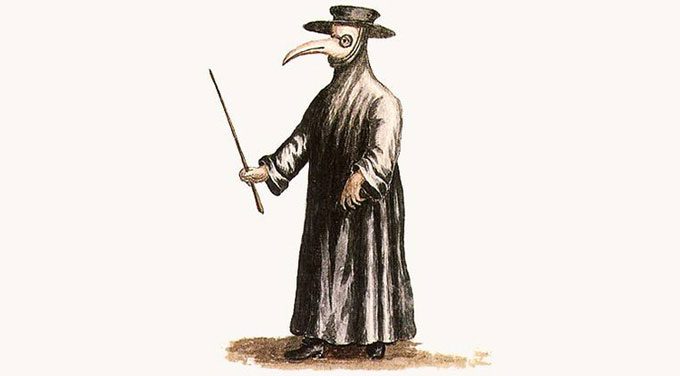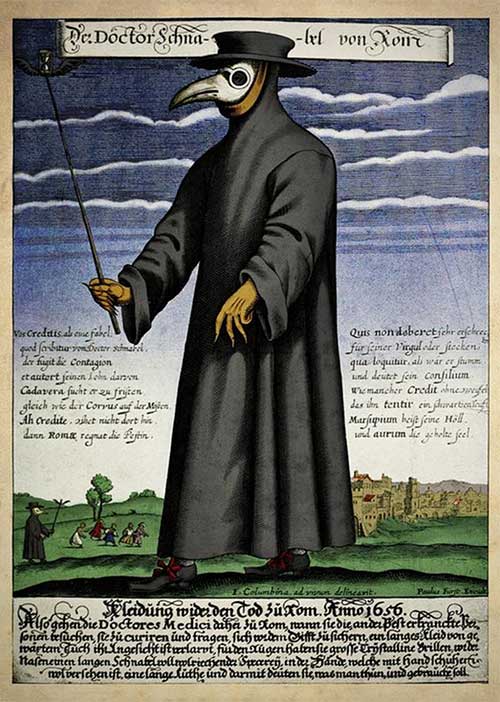Doctors during the Black Death believed that wearing leather clothing, combined with herbal masks, could prevent the spread of the plague.
The Black Death, which broke out in the mid-14th century, was the deadliest plague in history, killing 25 million people across Europe in just a few years, equivalent to 30% of the continent’s population at that time. The disease was caused by Yersinia pestis, which spread through fleas and lice that lived on black rats.

Plague doctor uniform during the Black Death. (Image: Liz Magno).
In desperation, European countries established a new team of doctors known as plague doctors, consisting of individuals with very little experience or even no medical training. Their mission was not to treat patients but to venture into hotspots to count the dead from the plague and sometimes assist in autopsies.
For a long time, no one knew the exact cause of the Black Death. By the 17th century, doctors still believed in the “miasma theory”, an outdated medical perspective that suggested the plague could spread through the foul smells of decomposing bodies. This belief led to the creation of a bizarre protective suit, which later became the uniform for plague doctors and turned into a haunting symbol associated with the Black Death.
The suit was invented in 1619 by Charles de l’Orme, the chief physician to King Louis XIII of France. It consisted of a long cloak that reached the ankles, baggy trousers, shoes, a hat, and gloves—all made from goat leather treated with aromatic substances and covered with a layer of hard white animal fat on the outside to prevent bodily fluids from the victims from seeping through.
Accompanying the protective suit was an essential accessory: a bird-like mask with a “nose extending 15 cm” filled with herbs such as cloves, mint, camphor, and aromatic resins. The purpose was to mask the unpleasant odors of corpses. Two eye holes were covered with glass.
While on duty, plague doctors often carried a long wooden staff to examine corpses without direct contact or to ward off others when they wanted to maintain distance.

A 17th-century painting of a plague doctor named Schnabel. (Image: Paul Fürst/Death Scent).
Unfortunately, this outfit, likened to the garb of the Grim Reaper, was ineffective in preventing the spread of the plague. It had several drawbacks, such as being hot, stuffy, and not breathable. As a result, many doctors contracted the disease and died.
Due to the lack of understanding of this disease, medieval treatment methods such as poulticing, bleeding, and lancing the swollen buboes—large pus-filled lumps that appeared in the neck, armpits, and groin of patients—were ineffective and often accelerated death due to infection.
Today, the plague caused by Yersinia pestis is no longer a threat to modern medicine. The last outbreak in the United States occurred in 1924, and since then, researchers have discovered effective antibiotic treatments.



















































